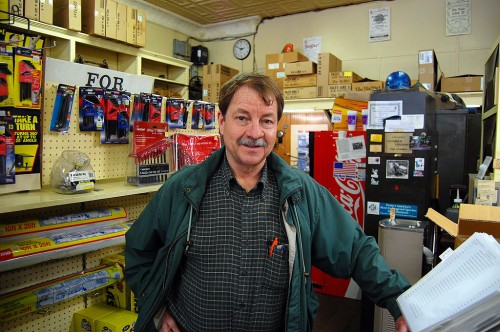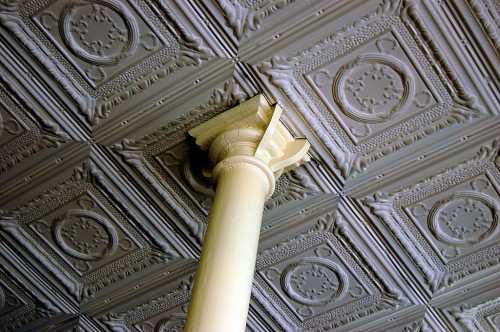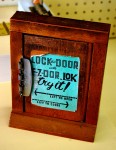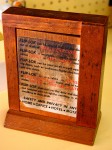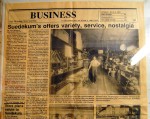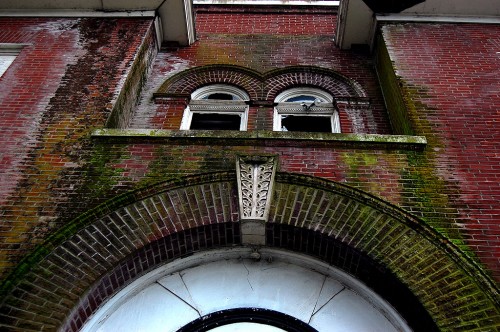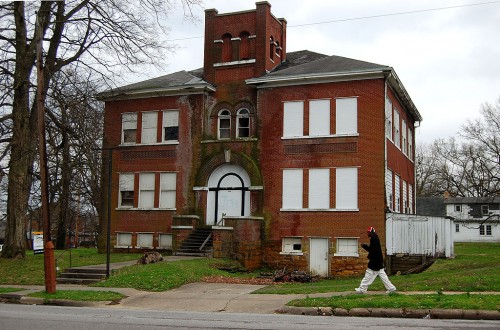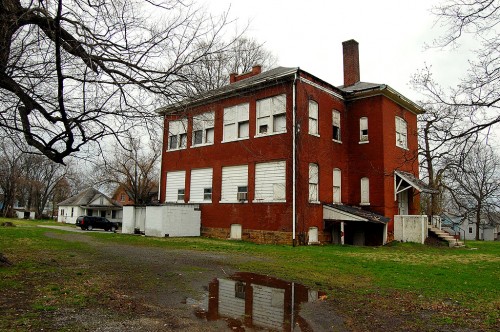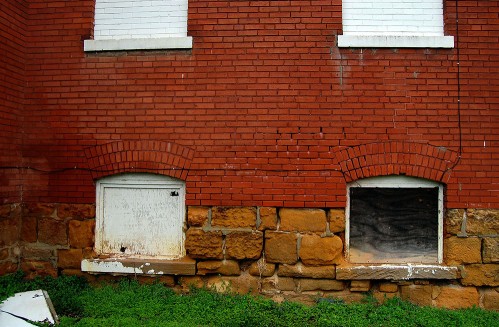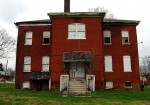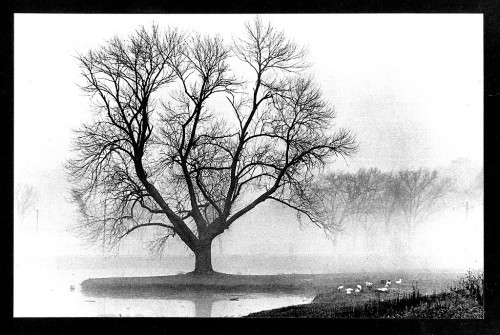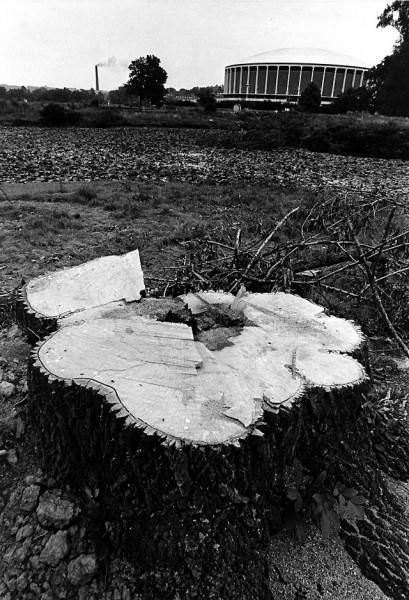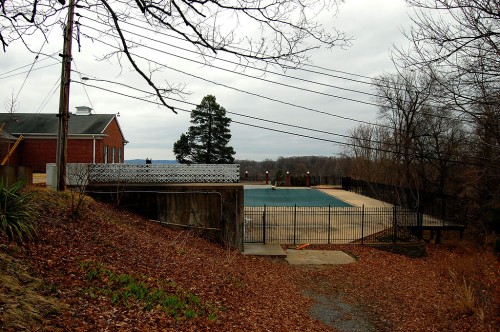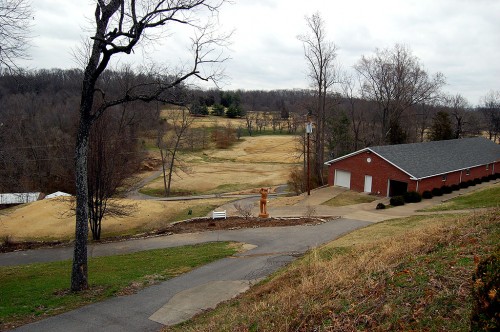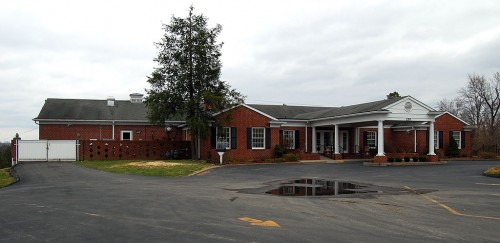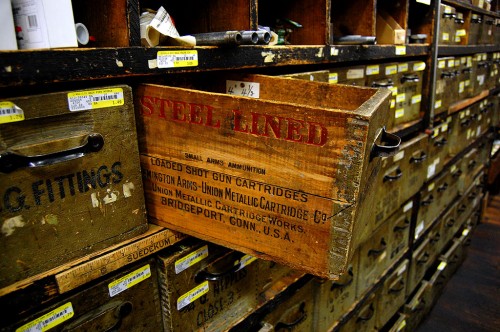 Brother Mark said I should stick my head in at Suedekum Hardware on Good Hope to see if they still used old ammunition boxes for storage drawers. “Look, too,” he continued, “for the marks nailed into the floor for measuring rope and chain.”
Brother Mark said I should stick my head in at Suedekum Hardware on Good Hope to see if they still used old ammunition boxes for storage drawers. “Look, too,” he continued, “for the marks nailed into the floor for measuring rope and chain.”
Nails mark 40 feet
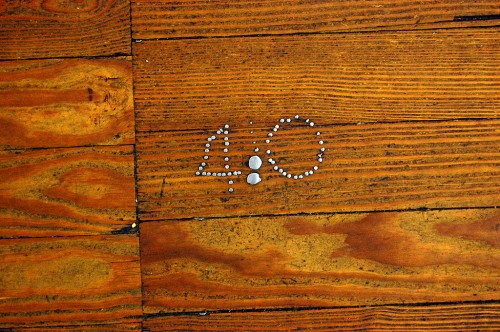 Mark was right. The drawers are still there and the nails still make a convenient way to measure materials.
Mark was right. The drawers are still there and the nails still make a convenient way to measure materials.
Why is it called the MEYER BLDG?
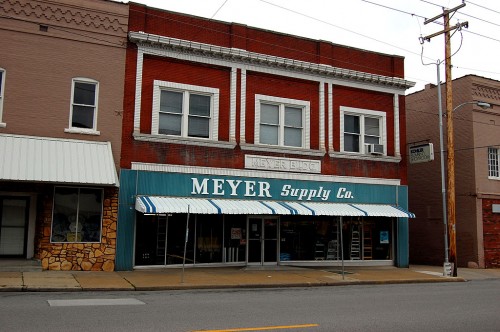 I was confused. I grew up going to Suedekum’s with my Dad. He had an office on the second floor of the Farmers and Merchants Bank, so the hardware store was a convenient stop. I had never noticed the terra cotta panel above the door that said MEYER BLDG before.
I was confused. I grew up going to Suedekum’s with my Dad. He had an office on the second floor of the Farmers and Merchants Bank, so the hardware store was a convenient stop. I had never noticed the terra cotta panel above the door that said MEYER BLDG before.
Chuck Meyer explained it
George Meyer and Herman Schwab established the business, called Meyer and Schwab Hardware Company, in 1900 at 626 Good Hope St. In 1912, W. F. Suedekum purchased Schwab’s share and the operation became known as Meyer and Suedekum Hardware.
In 1916, W.H. Meyer had a two-story brick building erected at 620 Good Hope Street to house the business. Suedekum bought out Meyer in 1926 and the name was shortened to Suedekum Hardware.
The ownership returned to the Meyer family in 1982 when Robert E. Meyer purchased the business and assumed operation of the store. The name was officially changed to Meyer Supply in 1990.
Haarig has changed
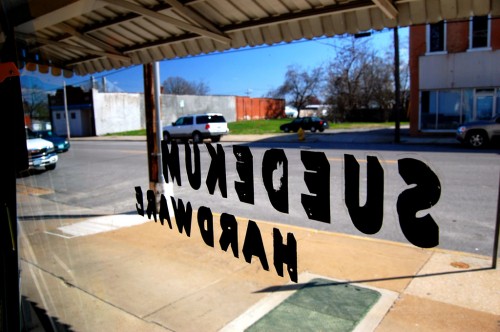 The hardware store looks out onto a changed and depressing landscape. A vacant lot diagonally across the street is where the Orpheum Theater stood until the early 1990s. Chuck Meyer said they heard the roof collapse one afternoon. The theater, built in 1917, introduced talking movies to Cape Girardeau in 1929.
The hardware store looks out onto a changed and depressing landscape. A vacant lot diagonally across the street is where the Orpheum Theater stood until the early 1990s. Chuck Meyer said they heard the roof collapse one afternoon. The theater, built in 1917, introduced talking movies to Cape Girardeau in 1929.
The area became known as the Haarig District because of the large influx of German immigrants who came to Cape Girardeau in the late 1840s and 1850s, with another peak coming after the Civil War. A high percentage of them came from Hanover and Brunswick, which created a close-knit community.
Meyer’s offers service, nostalgia
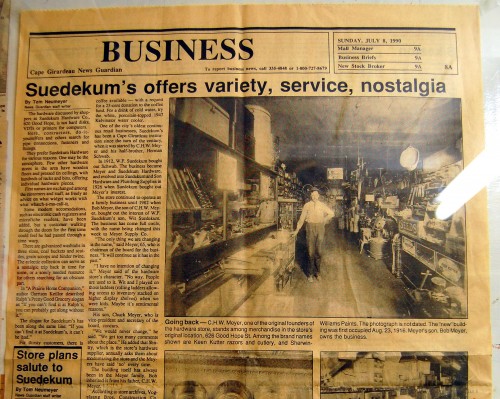 Tom Neumeyer wrote a story headlined Suedekum’s offers variety, service, nostalgia in 1990, when the store was rebranded with the Meyer name.
Tom Neumeyer wrote a story headlined Suedekum’s offers variety, service, nostalgia in 1990, when the store was rebranded with the Meyer name.
It still offers the kind of unique service that only an old-time hardware store can provide. Two of the five customers who came into the store while I was there started off by saying, “Lowes sent me here because they couldn’t help me.”
If you have an older house or have an oddball need or just want to talk with someone who has seen and done it for years, this is the place to come to.
Metal ceilings look the same
Many of the features I remember as a little boy are unchanged. The steel columns and metal ceilings are still there. (I read somewhere that the ceilings had been painted in 1957. I don’t know if they’ve had a touch-up since then,)
Rolling ladders still work
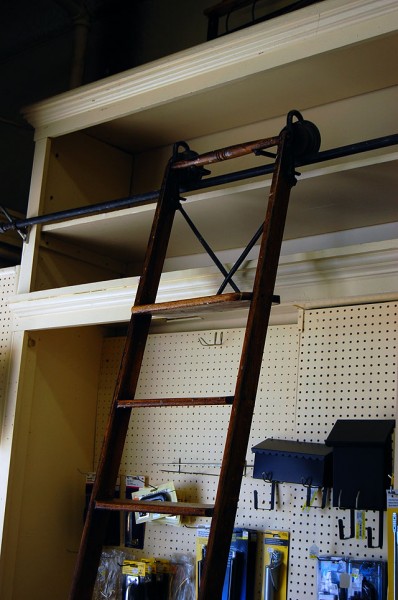 I always thought it was cool how the store had ladders that would roll around on rails so merchandise on the high shelves could be reached. The ladders are still there and they still work.
I always thought it was cool how the store had ladders that would roll around on rails so merchandise on the high shelves could be reached. The ladders are still there and they still work.
They had an elevator?
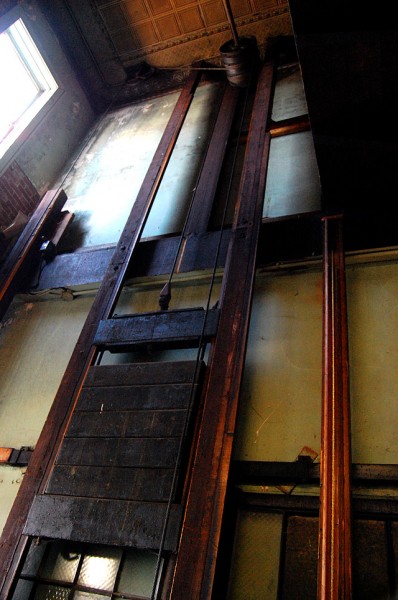 I didn’t know until this trip that there was a huge freight elevator in the building. It still works. It looks a lot like the one in the old Walther’s Furniture Store on Broadway (more about that coming).
I didn’t know until this trip that there was a huge freight elevator in the building. It still works. It looks a lot like the one in the old Walther’s Furniture Store on Broadway (more about that coming).
Gallery of photos from Meyer / Suedekum’s
As always, click on any image to make it larger, then click on the left or right side to move through the gallery.

